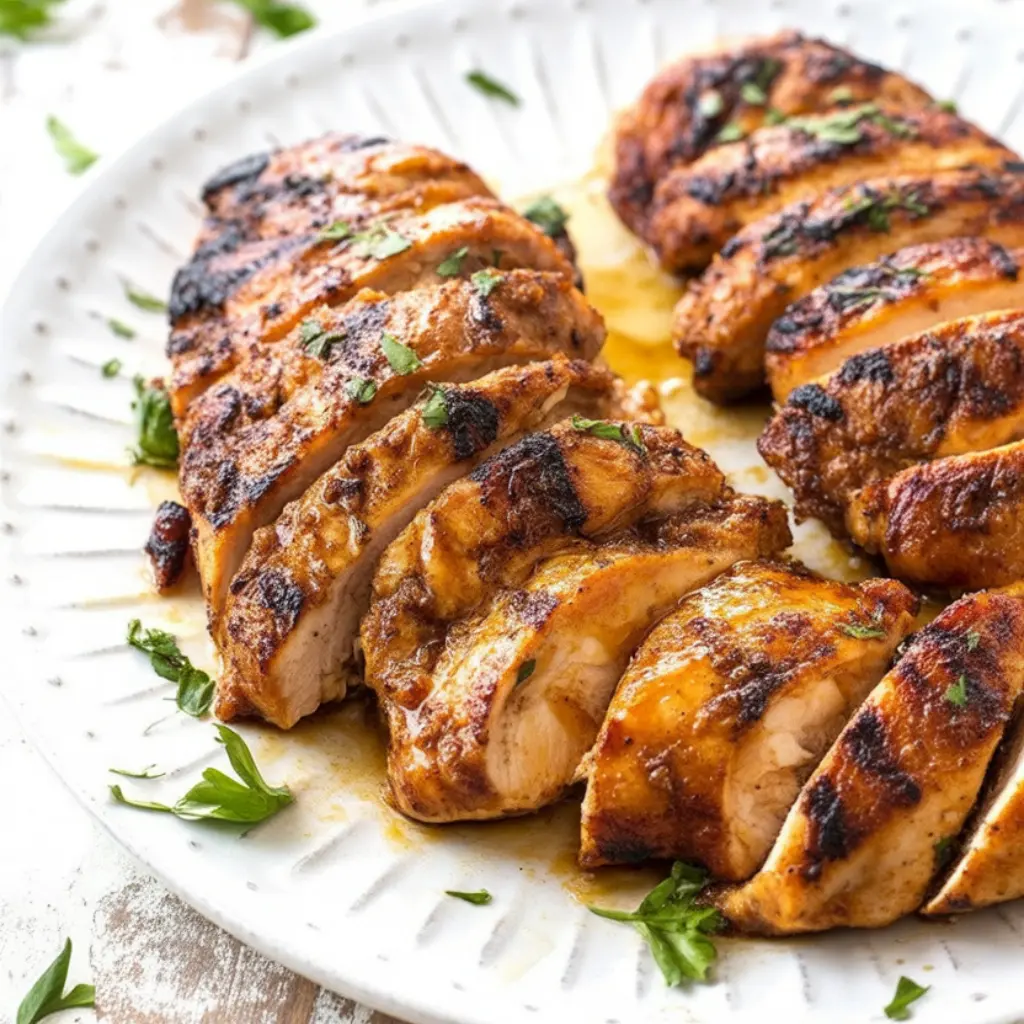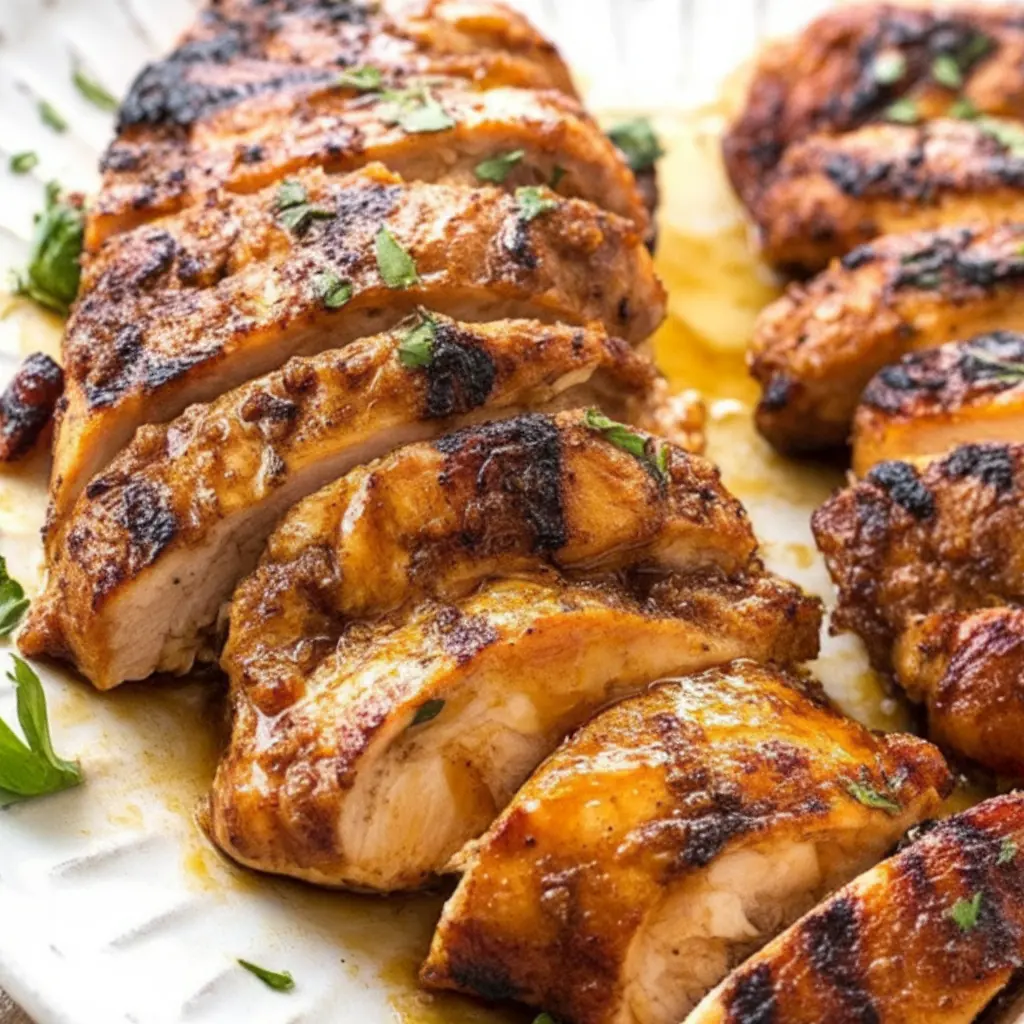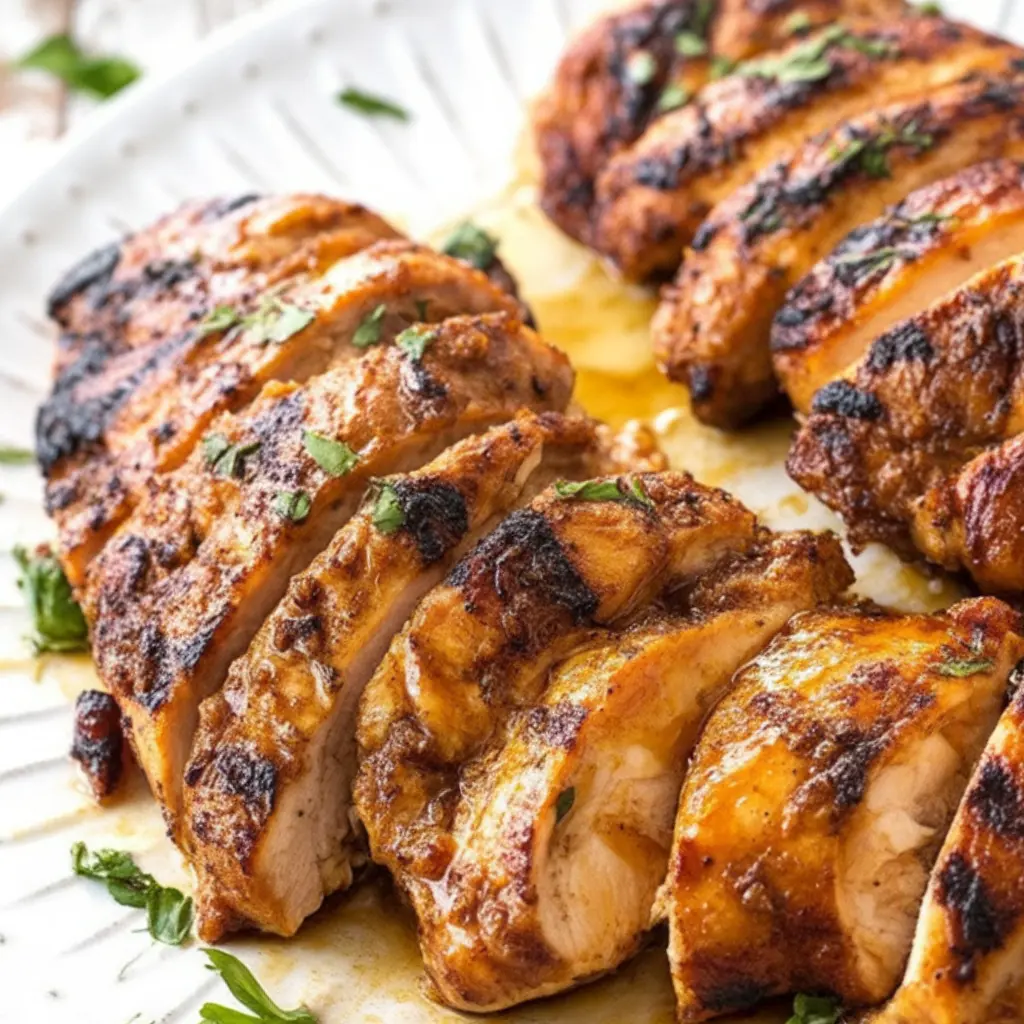I still remember the first time I marinated something—not just a splash of vinegar and garlic, but actually letting the meat sit and soak, giving it time to take on flavor. I was twenty-six, newly married, and trying to make grilled chicken for my husband’s parents during one of those high-stakes, “make a good impression” dinners.
I’d watched a video earlier that week about marinades and thought, how hard could it be? I mixed lemon juice, soy sauce, olive oil, a little honey, and a few garlic cloves. Poured it over the chicken, tossed it in a bowl, and let it sit for two hours. What came off the grill that night wasn’t just good—it was the first time I felt like I’d made something truly memorable.
Since then, I’ve tested a dozen different versions—some bold and spicy, others citrusy and bright, a few that fell flat or felt too salty.
But this one? This is the marinade I always come back to. It’s balanced, forgiving, and endlessly versatile. It works whether you’re grilling, roasting, or pan-searing. And best of all, it tastes like home.

Why You’ll Love This Recipe:
- Easy to throw together with pantry staples
- Works beautifully with any cut of chicken
- Great for make-ahead meals or meal prep
- Perfect balance of tangy, savory, and just a touch sweet
- Makes leftovers that actually taste better the next day
Ingredients You’ll Need:
- 1/4 cup olive oil – I use extra virgin because it’s what I keep on hand, but regular olive oil or even avocado oil works fine. It helps the marinade stick and keeps the chicken moist.
- 3 tablespoons soy sauce – Adds depth and saltiness. I prefer low-sodium, especially if I’m planning to reduce the marinade later into a glaze.
- 2 tablespoons honey – Just enough to round out the sharpness. Maple syrup works too, but honey gives a thicker texture.
- 2 tablespoons fresh lemon juice – Brightens everything up. You can sub apple cider vinegar in a pinch, though I find lemon gives it a cleaner finish.
- 3 garlic cloves, minced – Fresh is best, but I’ve used jarred garlic before and lived to tell the tale.
- 1 teaspoon Dijon mustard – It’s the hidden star here, helping emulsify everything and adding a gentle tang.
- 1/2 teaspoon black pepper – Freshly cracked makes a difference.
- 1/2 teaspoon smoked paprika (optional) – I love this when grilling—it adds just a whisper of smokiness.
You’ll also need about 1.5 to 2 pounds of chicken—boneless breasts, thighs, or even drumsticks. I’ve tried it with all of them. Just adjust your cook time accordingly.
How to Make It (Step-by-Step Instructions):
Start by grabbing a medium mixing bowl or a large measuring cup—whatever you usually use to whisk together dressings will work here. I always add the olive oil first, then the soy sauce, lemon juice, honey, mustard, garlic, pepper, and paprika. Whisk until it looks unified and smooth; the Dijon helps everything come together without separating.
Next, place your chicken in a large zip-top bag or a shallow glass dish. I prefer using a dish if I know I’ll be flipping the chicken halfway through marinating. Pour the marinade over the chicken, making sure each piece is well coated. If I’m using a bag, I’ll seal it, lay it flat, and give it a gentle massage before popping it in the fridge. If I’m using a dish, I’ll cover it tightly with plastic wrap. Either way, let it marinate for at least 2 hours—but if you can swing overnight, it’s absolutely worth it.
When you’re ready to cook, take the chicken out of the fridge about 20 minutes ahead of time so it can come to room temperature a bit. This helps it cook more evenly. Discard the marinade unless you plan to simmer it into a sauce (if you do, boil it for at least 3-5 minutes to kill any bacteria). Grill, bake, or pan-sear your chicken depending on your mood or the weather. I usually grill it if we’re having company and roast it on a sheet pan when it’s just us.
Chicken breasts usually need about 6–7 minutes per side on medium-high heat if you’re grilling, or 20–25 minutes at 400°F in the oven. Thighs will take a bit longer, but they’re more forgiving and juicy. I always use a meat thermometer now after overcooking one too many dinners in my early cooking days—165°F is your goal for doneness.

Expert Tips for the Best Results:
What I’ve learned over the years is that patience makes a big difference. Letting the chicken marinate long enough—not just a quick hour—really allows the flavors to soak in. And don’t skimp on the acid; it helps tenderize the meat naturally without making it mushy. Always bring your chicken close to room temperature before cooking—it sears better and cooks more evenly. Lastly, rest your meat after cooking for about five minutes before slicing; it makes all the difference in juiciness. That little pause feels like a gift every time.
Variations & Substitutions:
Over the years, I’ve swapped ingredients based on what I had in the pantry. Once I ran out of honey and used brown sugar—it gave the marinade a deeper, caramelized flavor. Another time I added grated ginger and a splash of sesame oil for an Asian twist, and it turned out so well I jotted it down to repeat. I’ve also skipped the mustard entirely when I was out, and while it was missing a little tang, it still worked beautifully. This recipe is flexible—don’t be afraid to play with it.
Serving Suggestions:
This chicken shines next to roasted vegetables, tucked into wraps, or sliced over a salad. I love serving it with a big bowl of lemony couscous or rice pilaf when we’re feeding guests—it feels complete without being fussy. On busier weeknights, I’ll shred the leftovers for tacos or serve cold slices with a hunk of crusty bread and a handful of arugula. It’s the kind of chicken that fits into your life, not the other way around.
Storage & Reheating Instructions:
Once cooked, the chicken keeps well in an airtight container in the fridge for up to four days. I usually reheat it gently in a skillet with a splash of water or broth to keep it from drying out. The flavor holds up beautifully, though the texture softens slightly if you microwave it. It’s also delicious cold—especially sliced thin for sandwiches or grain bowls. I rarely freeze it once cooked, but the marinade itself freezes well if you want to prep ahead.
Recipe FAQs (Answered by Clara):
Can I make this ahead of time?
You sure can. I often mix the marinade in the morning, pour it over the chicken, and let it sit in the fridge until dinner. It actually tastes better after resting.
Can I use frozen chicken?
Yes, but thaw it fully before marinating. The marinade won’t absorb properly if the chicken is still frozen or too cold.
What’s the best way to cook this chicken?
Honestly, it depends on your mood. Grilling gives it the most char and smoky flavor, but oven-roasting is hands-off and consistent. I go with whatever feels easiest that day.
Can I reuse the marinade for sauce?
You can, but only if you boil it first. I let it simmer on the stove for a few minutes until it thickens slightly—it’s great drizzled over rice or veggies.
Does this work with other proteins?
Absolutely. I’ve used it on pork tenderloin, tofu, and even salmon. Just adjust your cook times and you’re good to go.

If you’ve been searching for a chicken marinade that’s simple but special, the kind you can trust for weeknights and weekends alike, I hope you give this one a try. It’s been with me through backyard cookouts, last-minute dinners, and even a few “meet the parents” moments. It’s not flashy—but it’s honest, reliable, and full of flavor. Just like the kind of food I want more of in my life. If you make it, I’d love to hear how it turned out—leave a comment, share a tip, or just drop by to say hello. Happy cooking from my kitchen to yours.
Nutrition Information (per serving, based on 4 servings):
- Calories: 260
- Protein: 28g
- Fat: 13g
- Carbohydrates: 6g
- Sugar: 4g
- Sodium: 480mg

chicken tenders
Ingredients
- ¼ cup olive oil
- 3 tablespoons lemon juice freshly squeezed
- 2 tablespoons soy sauce
- 2 tablespoons honey or maple syrup
- 3 cloves garlic minced
- 1 teaspoon dried oregano or Italian seasoning
- ½ teaspoon paprika
- Salt and pepper to taste
- Optional: ¼ teaspoon red pepper flakes for heat
Instructions
- Mix the marinade: In a medium bowl or jar, whisk together olive oil, lemon juice, soy sauce, honey, garlic, herbs, paprika, salt, and pepper until well combined.
- Marinate the chicken: Place chicken in a large resealable bag or shallow dish. Pour marinade over the chicken, making sure it’s fully coated. Seal and refrigerate for at least 30 minutes, preferably 2–4 hours (up to overnight for deeper flavor).
Cook as desired:
- – Grill: Preheat grill to medium-high. Grill chicken 5–7 minutes per side or until internal temperature reaches 165°F (74°C).
- – Bake: Bake at 400°F (200°C) for 20–25 minutes.
- – Pan-sear: Sear in a hot skillet over medium heat for 5–6 minutes per side.
- Serve: Let the chicken rest for 5 minutes before slicing. Serve with your favorite sides.
Notes
- Don’t reuse leftover marinade unless boiled first for safety.
- For extra depth, add 1 tablespoon Dijon mustard or Worcestershire sauce.
- Great for chicken thighs, tenders, or drumsticks too.
- Freeze chicken in the marinade for easy meal prep—thaw and cook when ready.


Leave a Reply